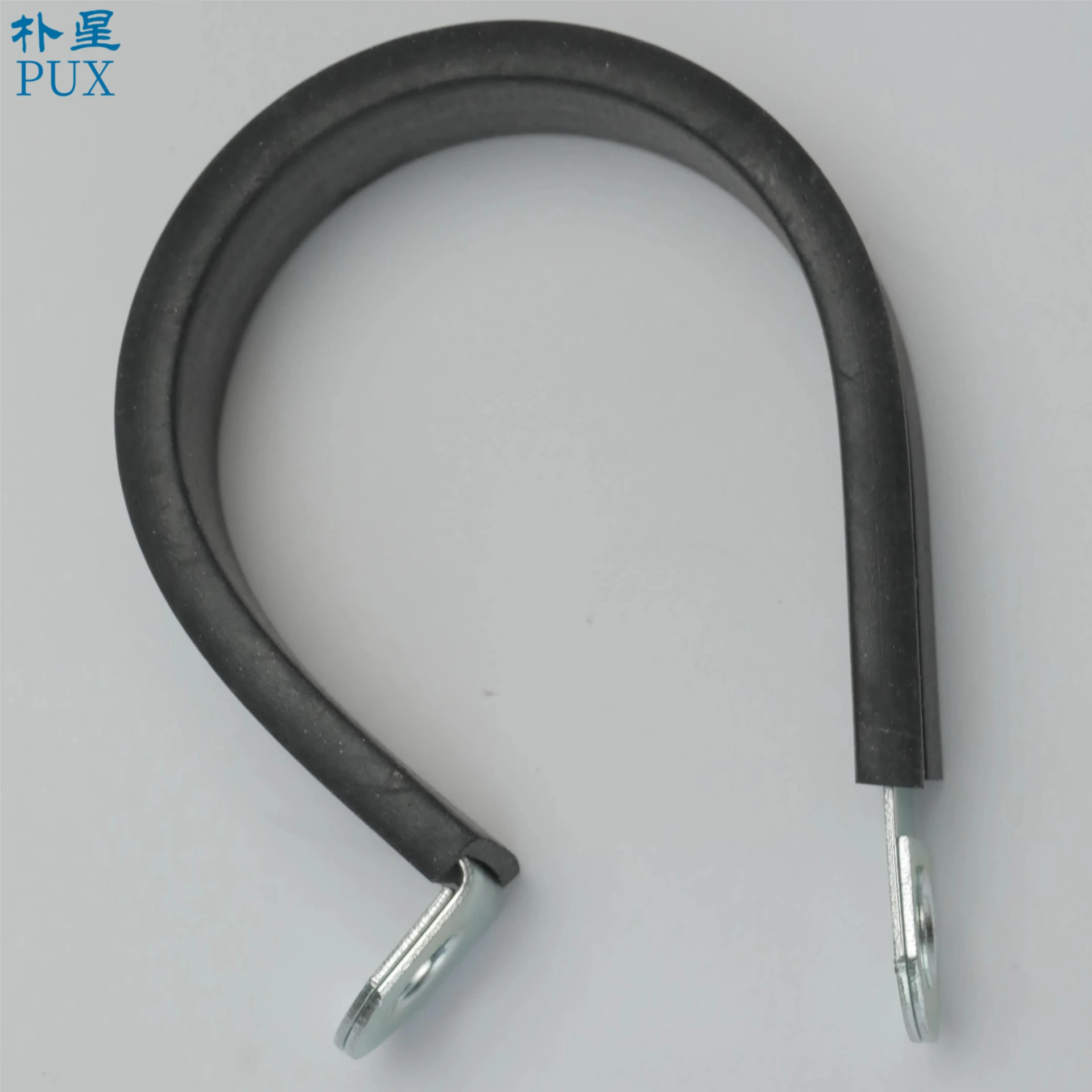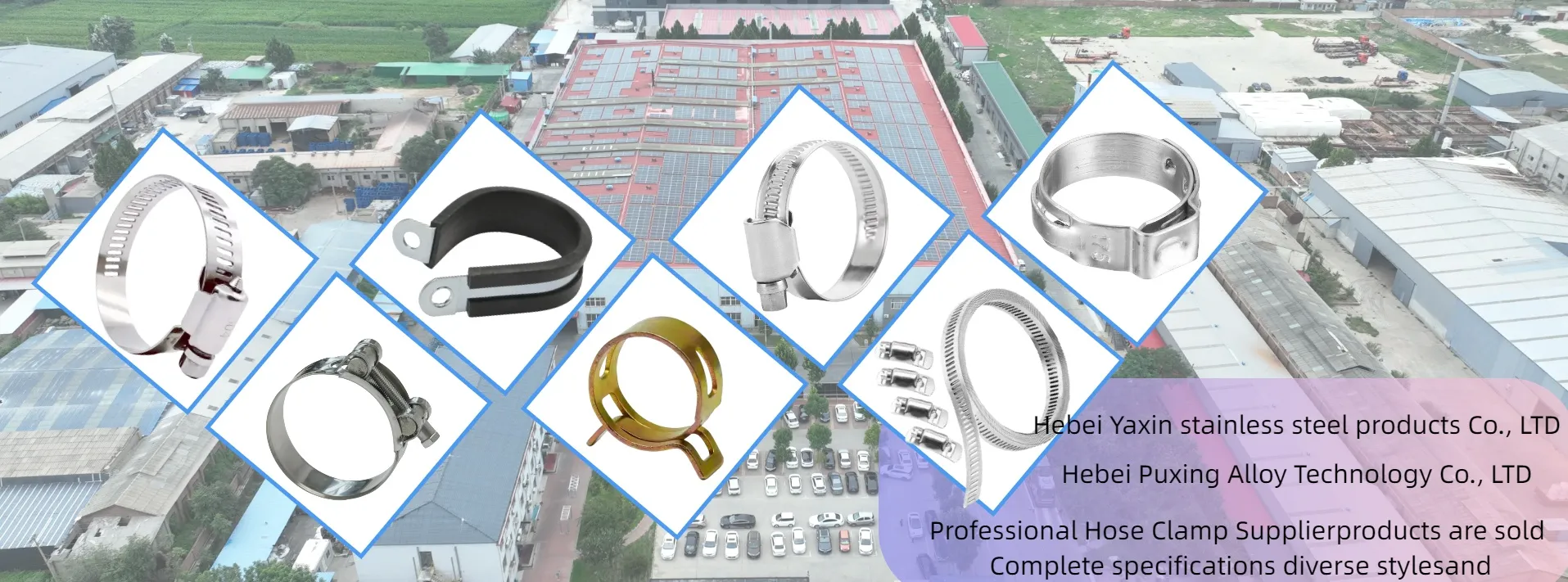- Phone:+86-17331948172 +86-0319-8862898
- E-mail: inquiry@puxingclamp.com
Nov . 16, 2024 02:20 Back to list
aluminium hose clamp manufacturer
The Rise of Aluminium Hose Clamp Manufacturers A Closer Look
In various industries, hose clamps play a pivotal role in ensuring the secure connection of hoses and tubes, preventing leakage, and providing structural integrity. Among the myriad types of clamps, aluminium hose clamps have gained considerable popularity due to their unique combination of strength, lightweight properties, and resistance to corrosion. This article delves into the world of aluminium hose clamp manufacturers, exploring their significance, manufacturing processes, and future trends.
Understanding Aluminium Hose Clamps
Aluminium hose clamps are devices used to attach and seal hoses to fittings. What sets aluminium apart from other materials, such as stainless steel or plastic, is its favorable weight-to-strength ratio. Aluminium is significantly lighter than stainless steel, making handling and installation easier, particularly in automotive and aerospace applications where minimizing weight is crucial. Moreover, aluminium offers excellent resistance to corrosion, especially when anodized or treated with protective coatings, which enhances its durability in various environmental conditions.
The Manufacturing Process
Aluminium hose clamp manufacturers typically follow a series of steps to produce high-quality products. The process begins with the selection of the right grade of aluminium, which is often chosen based on the intended application of the hose clamp. Common grades include 6061 and 6063 due to their excellent mechanical properties.
1. Design and Prototyping Manufacturers utilize computer-aided design (CAD) software to create detailed designs of hose clamps. Prototyping allows for adjustments to be made before mass production begins, ensuring that the final product meets specific operational requirements.
2. Material Preparation Once the design is finalized, raw aluminium materials are procured and cut to size. In some cases, manufacturers may choose to use recycled aluminium to promote sustainability.
3. Machining and Forming This essential step involves processes like stamping, bending, or drilling, where the aluminium is shaped into the desired form. Advanced CNC (Computer Numerical Control) machines are often employed to enhance precision and scalability.
4. Surface Treatment To improve corrosion resistance and aesthetic appeal, aluminium hose clamps often undergo surface treatments. Options include anodizing, powder coating, or painting, which provide a protective layer while also offering customization in color and finish.
aluminium hose clamp manufacturer

5. Quality Control Stringent quality control measures are implemented throughout the manufacturing process. This includes testing for tensile strength, flexibility, and corrosion resistance to ensure the clamps can withstand the conditions they will face in real-world applications.
6. Packaging and Distribution Finally, once the clamps pass quality assurance tests, they are packaged and shipped to distributors or directly to clients, ensuring that they arrive in pristine condition.
The Market Landscape
The aluminium hose clamp market has seen steady growth in recent years, fueled by advances in technology and increased demand across various sectors, including automotive, aerospace, and marine industries. Manufacturers have recognized the need for lightweight and durable solutions, leading to innovative designs that enhance efficiency and reliability.
Countries with robust manufacturing capabilities, such as China, the USA, and Germany, have emerged as key players in this market. Many manufacturers offer customized solutions, allowing customers to specify dimensions, coatings, and other features to meet their unique needs.
Future Trends
Looking ahead, the landscape for aluminium hose clamp manufacturers is poised for continued evolution. The push for sustainability will significantly influence market dynamics, prompting manufacturers to adopt eco-friendly practices, such as using recyclable materials and minimizing waste during production.
Moreover, the rise of automation and smart manufacturing processes will likely streamline production, reduce costs, and improve product quality. As industries increasingly prioritize efficiency, the demand for high-quality aluminium hose clamps that meet stringent performance standards will likely grow.
Conclusion
Aluminium hose clamp manufacturers are essential players in the global market, providing innovative solutions that cater to a broad spectrum of applications. With their lightweight, durable, and corrosion-resistant properties, aluminium hose clamps offer definitive advantages over traditional materials. As the industry continues to evolve, manufacturers must adapt to changing market demands and embrace new technologies to remain competitive. The future looks promising for aluminium hose clamps, underscoring their vital role in modern engineering and maintenance practices across various sectors.
-
High Quality T Bolt Hose Clip Factory & Suppliers Durable Stainless Steel Hose Clamps for Industrial Use
NewsJul.08,2025
-
High-Quality Hose Clamp & T Clamp Hose Clamp Reliable Factory & Suppliers
NewsJul.08,2025
-
Cold Rolled Stainless Steel Band - Premium Quality Supplier & Factory Price
NewsJul.08,2025
-
High-Quality Steel Strip from China Stainless Steel Coil & Cold Rolled Carbon Strip Manufacturer & Supplier
NewsJul.07,2025
-
High-Quality T Bolt Hose Clip from Leading Factory & Suppliers Reliable t bolt hose clip Factories
NewsJul.07,2025
-
Mini Hose Clamp Manufacturer & Supplier Precision Hose Clamps Mini Clamp Factory
NewsJul.07,2025




